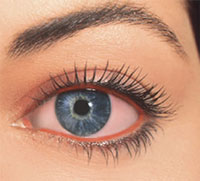Pink Eye
 Conjunctivitis is an inflammation of the conjunctiva, the thin, transparent membrane covering the surface of the inner eyelid and the front of the eye. The conjunctiva has many small blood vessels. It lubricates and protects the eye while the eye moves in its socket. When the conjunctiva becomes inflamed, this is called conjunctivitis.
Conjunctivitis is an inflammation of the conjunctiva, the thin, transparent membrane covering the surface of the inner eyelid and the front of the eye. The conjunctiva has many small blood vessels. It lubricates and protects the eye while the eye moves in its socket. When the conjunctiva becomes inflamed, this is called conjunctivitis.
Bacterial conjunctivitis, often called pink eye, typically causes swelling of the eyelid and a yellowish discharge. Sometimes it causes itching and/or matting of the eyelids. Bacterial conjunctivitis is very contagious and can be easily transmitted by rubbing the eye and then infecting household items such as towels or handkerchiefs. It is common for entire families to become infected.
Symptoms of conjunctivitis:
- Red, watery eyes
- Inflamed eye lids
- Blurred vision and a sandy or scratchy feeling in the eyes
- Pus-like or watery discharge around the eyelids
- Matting of the eyelids
How can conjunctivitis be prevented?
Certain precautions can to taken to avoid the disease and stop its spread. Careful washing of the hands, the use of clean handkerchiefs, and avoiding contagious individuals are all helpful. Children frequently get conjunctivitis because of their poor hygiene.
If you or someone in your household has contracted conjunctivitis, follow these steps to prevent the spread of the infection:
- Every time you touch your eyes or face, including when using medicine in your eye(s), wash your hands thoroughly.
- Wash any clothing touched by infected eyes including clothes, towels and pillowcases.
- Do not share make-up. If the infection is caused by bacteria or a virus, you must throw away your used make-up and buy new make-up.
- Do not touch the infected eye because the infection will spread to the other eye.
Diagnosing conjunctivitis:
Your eye doctor can easily detect conjunctivitis at an exam.
Treatment for conjunctivitis:
Antibiotic drops and compresses can ease discomfort and clear up the infection, normally within just a few days. Sometimes, the inflammation does not respond well to the initial treatment with eye drops. In those rare cases, a second visit to the office should be made. When there is severe infection, oral antibiotics are necessary. If left untreated, conjunctivitis can create serious complications such as infections in the cornea, eyelids and tear ducts.

